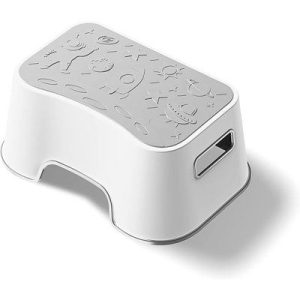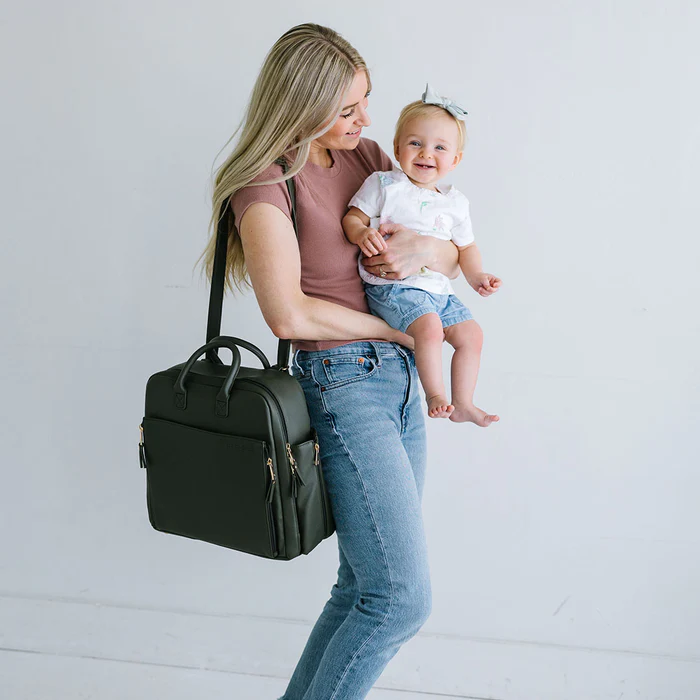Potty training is a milestone moment in many children’s lives. It can also be a journey filled with ups and downs, successes and accidents. A potty training stool can be a helpful tool during this process, providing toddlers with a sense of independence and security as they learn to use the toilet.
This article will explore the benefits of using a potty training stool, different types of stools available, and tips on how to choose the right stool for your child.
Benefits of Using a Potty Training Stools
A potty training stool can offer several advantages for toddlers during potty training:
Promotes Independence:
A stool helps toddlers reach the toilet seat comfortably, fostering a sense of self-reliance and accomplishment.
Improves Comfort and Positioning:
A stool allows toddlers to squat comfortably, which is a more natural position for elimination. This can help with ease of use and reduce straining.
Boosts Confidence:
Using a stool can increase a toddler’s confidence in using the toilet, reducing fear or anxiety around the process.
Enhances Safety:
A sturdy stool prevents toddlers from feeling wobbly or unsafe while sitting on the toilet.
While a potty training stool can be a helpful tool, it’s not a magic solution. Consistency, patience, and positive reinforcement are still key elements of successful potty training.
Types of Potty Training Stools
There are various potty training stools available, each with its own advantages:
Simple Step Stool:
This is a basic stool with one or two steps that allows toddlers to reach the toilet seat.
Folding Stool:
A folding stool is a space-saving option that can be easily stored when not in use.
Potty Training Ladder:
This combines a step stool with a potty seat attachment, offering a familiar potty experience on a higher level.
Adjustable Stool:
An adjustable stool allows you to change the height as your child grows, ensuring a comfortable fit throughout the potty training journey.
The best type of stool for your child depends on their age, size, and preferences.
Choosing the Right Potty Training Stools
Here are some factors to consider when choosing a potty training stool for your child:
Sturdiness and Stability:
The stool should be sturdy and stable enough to support your toddler’s weight without wobbling.
Height Adjustment:
If you choose an adjustable stool, ensure it adjusts to a height that allows your child’s feet to rest flat on the floor for proper posture.
Grip and Slip Resistance:
Look for stools with non-slip pads or textured surfaces to prevent your child from slipping.
Ease of Use:
Consider how easy it is for your child to climb on and off the stool.
Washability:
Choose a stool with easy-to-clean surfaces for maintaining hygiene.
Look for a potty training stool that complements your bathroom décor and feels comfortable for your child.
Encouraging Potty Training Success with a Stool
Here are some tips for using a potty training stool effectively:
Introduce the Stool Early: Let your child become familiar with the stool before starting potty training. Allow them to climb on and off and practice sitting comfortably.
Pair the Stool with Potty Time: Use the stool consistently during potty time routines. This helps create a positive association between the stool and using the toilet.
Positive Reinforcement: Praise your child for using the stool and for potty training successes. Positive reinforcement helps motivate them to continue using the toilet.
Focus on Progress, Not Perfection: Accidents are inevitable during potty training. Stay patient, positive, and focus on the progress your child is making.
Potty training is a journey, and a potty training stools can be a helpful companion along the way.
A potty training stool can be a valuable tool to promote independence, confidence, and a sense of accomplishment during potty training. By choosing the right stool and using it effectively, you can help your child feel comfortable and supported as they learn to use the toilet. Remember, patience, positive reinforcement, and consistency are key ingredients for successful potty training.

Potty Training Stools Safety Tips
Here are some safety tips to remember when using a potty training stool:
Adult Supervision: Always supervise your child when they are using the toilet, especially when using a stool.
Sturdy Stool: Make sure the stool is placed on a flat, even surface and won’t wobble or tip over.
Proper Footwear: Ensure your child is wearing footwear with good traction to prevent slipping off the stool.
Cleaning and Sanitation: Regularly clean and disinfect the potty training stool to maintain hygiene.
Alternatives to Potty Training
If you decide a potty training stool isn’t the right fit for your child, there are other options to consider:
Toilet Seat Reducer: A toilet seat reducer fits onto a regular toilet seat, making it smaller and more comfortable for toddlers.
Potty Chair: A potty chair is a standalone potty that resembles a toilet. This can be a familiar and comfortable option for some toddlers.
Potty training is a unique journey for every child. There’s no one-size-fits-all approach, and the best approach may involve a combination of strategies. Consider your child’s age, development, and preferences when choosing potty training tools and techniques.
Remember, patience, positive reinforcement, and consistency are key elements for successful potty training.
Creativity and Fun
Potty training can be a time of exploration and learning for toddlers. Here are some ways to use a potty training stools creatively to make the process more fun and engaging:
- Decorate the Stool: Let your child decorate their stool with stickers or non-toxic paint to personalize it and make it more inviting.
- Practice Makes Perfect: Use the stool for pretend play before starting potty training. Let your child climb on and off and practice sitting with dolls or stuffed animals.
- Sing Songs and Read Stories: Singing songs or reading stories related to potty training can make the experience more enjoyable and help toddlers feel comfortable.
- Reward System: Create a simple reward system for using the stool and potty. Positive reinforcement can motivate toddlers and encourage continued progress.
The Importance of Reading During Potty Training
Reading books about potty training can be a great way to introduce the concept to your child, ease any anxieties, and make the process more fun. Here are some tips for incorporating reading into your potty training routine:
- Choose Age-Appropriate Books: Look for books with simple language and colorful illustrations that are engaging for toddlers.
- Read Together: Cuddle up with your child and read the book together. Point out the pictures and discuss the story in a positive and encouraging way.
- Answer Questions: Be prepared to answer your child’s questions honestly and openly.
- Make it a Routine: Reading potty training books can become a part of your child’s potty time routine, creating a sense of familiarity and comfort.
Remember, potty training is a journey with ups and downs. Be patient, celebrate successes, and focus on making the experience positive for your child.
Conclusion
A potty training stool can be a helpful tool to provide toddlers with independence, comfort, and confidence during potty training. By choosing the right stool, using it safely, and incorporating creative strategies, you can help your child feel supported and successful on their potty training journey.






